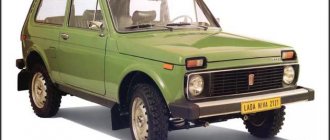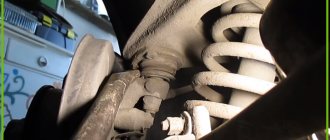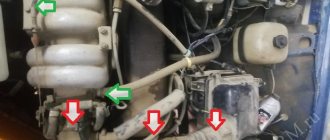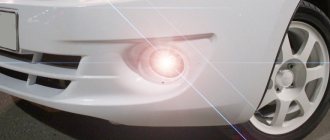What car are you the owner of? — Front-wheel drive, rear-wheel drive or all-wheel drive. Do you understand the mechanisms of a car, do you understand how its power and maneuverability on the road are justified, especially during descents and ascents? Often, the operation of cars takes place on a whim, only a part of the owners with their vehicle are on a first-name basis. An experienced and attentive driver clearly understands which part needs to be replaced as planned, whether it is necessary to rearrange the wheels, and what diagram is suitable for this. Not everyone, for example, can afford to allocate up to 20-30,000 rubles from the family budget twice a year to purchase a set of winter and summer tires. In order to save money, car owners are looking for acceptable solutions to the situation. And there may be several of them.
- “Once - yes much.” Some motorists think so and decide that it is better to buy expensive tires from a well-known brand, then you can count on quality, service, prestige and wear resistance of the product. Definitely the right decision. Firstly, premium tires are manufactured using innovative technologies, all high-level indicators are thought through, a quality stamp is given, and service life is extended. Secondly, expensive tires are a big responsibility. Of course, you can hope for their quality, and whether you can predict the road situation, whether you are able to find the ideal roadway without potholes or foreign sharp objects. There are no 100% safe roads, and any tire, be it economy class or premium, still does not last forever and is not insured against force majeure.
- “The sum does not change by changing the places of the terms.” A familiar rule from childhood. Among car owners, it is also used, only it is designated with a technical slant and sounds like this: rearranging the wheels on a car, the standard scheme is used.
- “A shirt worn to holes – still warm.” It’s practically a rag, but it’s a shame to throw it away. It may be a pity to part with your favorite clothes, but it is necessary if they no longer warm or decorate. But, of course, you can’t drive on bald tires! Unfortunately, in our society there are many reckless drivers who do not pay attention to the condition of the tires, they are not interested in rearranging the tires according to the scheme, they simply want to get to the goal in their car and are still happy that the car starts up every morning and does not refuse to carry passengers. And the fact that the braking distance has already exceeded all maximum indicators, that the car can sometimes drive, go into an uncontrolled skid - it doesn’t matter. Automobile
There may be several ways out of the situation, but let’s pay attention to the simplest and most popular one - rearranging the wheels; the process diagram has never been complicated, and even more so, several variations are attributed to it. Choose practically without restrictions!
When is a tire rotation recommended?
Service station employees recommend paying attention to the condition of the wheels, and if impressive numbers already appear on the dashboard indicating the mileage, and it is somewhere around 5,000-10,000 kilometers, then the rearrangement of the wheels is shown, the diagram is selected as desired. You should be extremely careful if you bought a used car second-hand, because then dashing craftsmen could twist the mileage figures, hiding the true wear and tear of the mechanical “stuff” of the car that was previously put up for sale. Then you should be guided by the condition of the tread pattern. We noticed wear on the front or rear wheels, assessed them as a percentage, and decided to rotate the tires according to the scheme. The following reasons for rearranging wheels are determined:
- Uneven tire wear.
- The need to strengthen one or another pair of wheels for front-wheel drive and rear-wheel drive vehicles, respectively.
- The desire to extend the life of tires, improve their condition by temporarily changing the load level.
- Unforeseen traffic situation, emergency repair work in the field.
Thus, there are no strict recommendations on when it is worth rotating the wheels; their condition is simply assessed, time is found for the replacement procedure, and money is allocated to pay for the work, if you do not do everything on your own.
Wheel rotation schemes
The wheel rotation scheme will help make interchange effective. Before the procedure, it is recommended to mark each splint with a marker to avoid confusion. For each type of car, a specific interchange plan has been developed. Owners of front-wheel drive and all-wheel drive cars can use two options, and owners of rear-wheel drive cars can use one.
- Front-wheel drive - the wheels from the rear axle are moved to the front, not my side of the installation. The front ones are placed on the rear axle, changing their location from left to right along the central axis of the car.
- Rear-wheel drive and all-wheel drive - the wheels are swapped from the front to the rear axle - diagonally.
- Scheme with a spare tire - if you have a full-size spare tire of the same tire model, then the wheel must be included in the castling process. The sequence looks like this: first, the wheels are changed in the sequence of the diagram that the car corresponds to. Then, the spare wheel is installed on the rear axle on the left side, and the removed wheel is sent to the spare compartment.
If the car is equipped with wheels with an asymmetric tread (Rotation) and mounting side (Inner, Outer), then diagonal rotation is not possible. Only interaxle castling.
What you need to rotate your tires
There are tools in the trunk of any car, many of which are useful for repair work. The idea is to rearrange the wheels on a car, the diagram is supposed to be available, then the following available tools will be needed:
- Jack. A model of a powerful floor hydraulic jack is suitable, with the help of which it will be possible to lift the car and fix it, perhaps for several hours, while the wheels rotate from one axle to another.
Jack - Stand. To enhance the power of the jack and securely fix the machine in weight, it is recommended to use a stand to the jack. It can be factory equipped or can be replaced with any other durable structure, for example, a cinder block or a log block.
Jack stand - Rearrangement scheme. Determine for yourself the best option so that rearranging tires according to the scheme is crowned with success and proves in practice its profitability and correctness.
When undertaking such a painstaking procedure on your own, try to enlist the support of friends or family. There is no doubt that you will need support and help. When repairing a car, there is always something to support, serve, smoke, take out, move, substitute, and so on. The list of actions can be endless!
Why should I change the wheels on my car?
Tire wear is inevitable when using a vehicle. The location and extent of wear on a tire's contact patch depends on many factors, including the position of the tire on the vehicle. Keep in mind that each axle of a vehicle experiences different external forces. For example, the front tires on a front-wheel drive vehicle are regularly subjected to greater loads than the rear tires. Thus, the front tires on a front-wheel drive vehicle will typically experience accelerated wear compared to the front tires on a rear- or all-wheel drive vehicle. Rotating the wheels helps even out the wear on all four tires. If you leave the front tires unrotated on a front-wheel drive vehicle, they will wear out faster than the rear tires. Without proper inspection, you'll end up with two front tires that have reached or have reached their maximum tread wear and two rear tires with life remaining.
Rotating your tires helps prevent uneven wear. As a result, you will have to replace some tires prematurely. In some cases, while some of your tires may technically have remaining life, it will no longer make sense to pair them with any new tires with unworn tread. So not only will you have to throw away your worn-out tires, but also the tires with remaining life!
How to swap wheels on a car: wheel replacement schemes
When operating a car, it is important not only to take care of the tires - maintain pressure in them, monitor for the appearance of mechanical damage, but also to perform such a simple but very important procedure as rotating the wheels. Depending on different operating conditions, technical characteristics and other parameters of the vehicle, one or another wheel replacement scheme may be used.
Buying a second set of wheels is quite a burden on the budget, so every car owner should strive to extend the life of the tires. Following the recommendations of professional tire specialists will allow you to ensure the most even tread wear and significantly extend the life of your tires.
How to properly change winter tires
Winter modifications do not have any special requirements for the replacement sequence.
Thus, the symmetrical studded or Velcro version must be rearranged according to the standard pattern, respecting the direction of the tread. Some buyers ask whether studded tires can be rearranged. The answer is that metal inserts do not affect the wear of the rubber itself.
Rearranging wheels taking into account the spare wheel
If you include a spare wheel in rotation, you can achieve an increase in the wear threshold of the entire tire set by an average of 20%. But be careful and do not use the spare tire if it is in perfect condition and the four wheels are already bald. The reason is that there is a difference in radii, which can cause damage to the transmission.
Rearranging wheels on a car including a spare tire
Thus, it is not difficult to rotate the wheels; the main thing is to understand why this is necessary and how to perform this rotation procedure. Car enthusiasts claim that such routine actions will lead to results - an increase in the service life of tires.
Rearranging wheels on a car
It is recommended to change tires every 5-8 thousand kilometers, even at the stage when obvious signs of wear are not yet visible. Rearrangement schemes depend on which wheels are driving, as well as directly on the type of tread pattern of the tires.
On front-wheel drive vehicles, when using models with a non-directional pattern, rotation can be carried out according to two schemes:
- cross: the front left wheel changes places with the rear right one, and the front right one with the rear left one;
- cross-shaped in the direction of the front axle: the rear left wheel moves to the place of the front right, and the rear right to the place of the front left, while the front right goes back to the same right position, and the front left to the rear left installation place.
On rear-wheel drive cars, tires with a non-directional design are rearranged as follows:
- according to the cross pattern described above for front-wheel drive vehicles;
- according to a cross-shaped pattern in the direction of the rear axle: the front left wheel will take the place of the rear right one, in turn, the front right one will move to the place of the rear left one, but the rear wheels will simply move forward without changing the sides of placement.
For all-wheel drive vehicles, a cross pattern should be used when using non-directional wheels.
Tire models with a directional tread pattern should only be moved from front to rear on the same side of the car.
If you have a spare wheel with the same parameters as the other wheels, it must also be included in the rearrangement scheme. In this case, it should be installed each time in the place of the rear right wheel, unless otherwise specified in the manufacturer’s instructions. And the wheel that should have been in this position according to the standard rearrangement scheme should be put in the trunk.
This way you can ensure even wear on all five wheels.
Preparatory stage
Before changing a tire on your car, perform a number of preparatory steps:
- Pull the parking brake lever as far as possible and place shoes on both sides of the wheel located diagonally from the one being removed. Try to push the stops tightly under the tire (you can use a hammer).
- Place a warning sign at a distance of 15 m from the car at the edge of the roadway. At dusk and in the dark, be sure to turn on the flashing hazard lights.
- Spray the wheel bolts with lubricant (if available).
- Remove the spare tire from its socket and check the pressure with a pressure gauge. If necessary, inflate the tire.
- Place the jack securely so that its base rests on the special socket on the bottom of the car.
When installing the jack, do not be lazy to look under the car and make sure that the “heel” is in the socket. It is not allowed to rest the jack on flat fragments of the bottom or jet rods - the latter easily bend under the weight of the car.
Never place the spare tire on the tread next to the car or lean it against body elements. If it rolls, at best it will scratch the paintwork and “run away” into a ditch. The worst-case scenario is that the spare tire gets into a passing vehicle, then changing a wheel on the car will result in an accident with damage to third-party cars.
Truck wheel rotation
On trucks, tire rotations should be performed every 40-50 thousand kilometers or when significant uneven tread wear is detected.
The following factors should be considered when planning reshuffles:
- what position is this particular tire model intended for;
- load on each individual vehicle axle;
- tread depth measurements for each tire.
In a standard three-axle trailer, the third axle is the most loaded, but the second one operates in the most gentle conditions. At certain intervals, you should measure the remaining tread depth and swap the least and most worn tires of the same functional purpose. Twin wheels should also be swapped periodically, especially if the difference in their residual depth is more than 3 mm.
When rotating non-directional tires, it is advisable to reverse the direction of their rotation.
Some manufacturers produce universal ones that can be installed on any axis. Such tires can first be placed on the steering position, and after some mileage they can be moved to the wheels of free-rolling axles.
Rotating the wheels will help you save on changing tires, because with even wear, the service life of one set increases significantly. In addition, the same tread height contributes to the stability of the vehicle's behavior while driving.
Rotating your tires is critical when it comes to extending the life of the tires you buy. As you drive under different driving conditions, your tires will wear unevenly. Depending on your driving style, it's wise to rotate your tires every 6,000 miles (9,700 km), roughly along with every other oil change. Read on to learn how to add this inexpensive and easy money-saving technique to your mechanic's arsenal.











